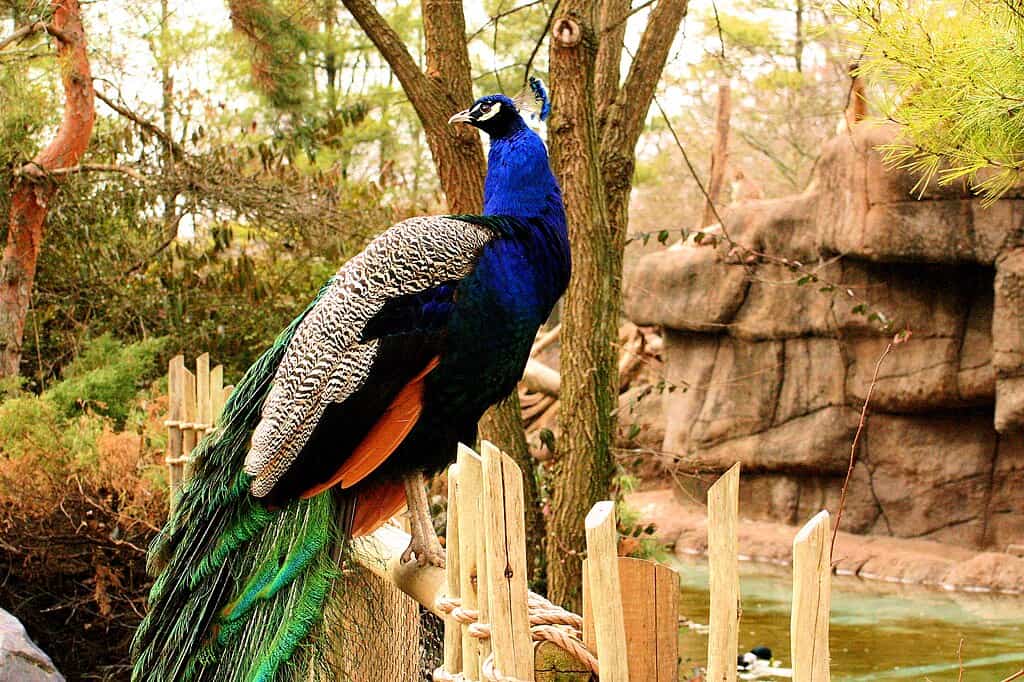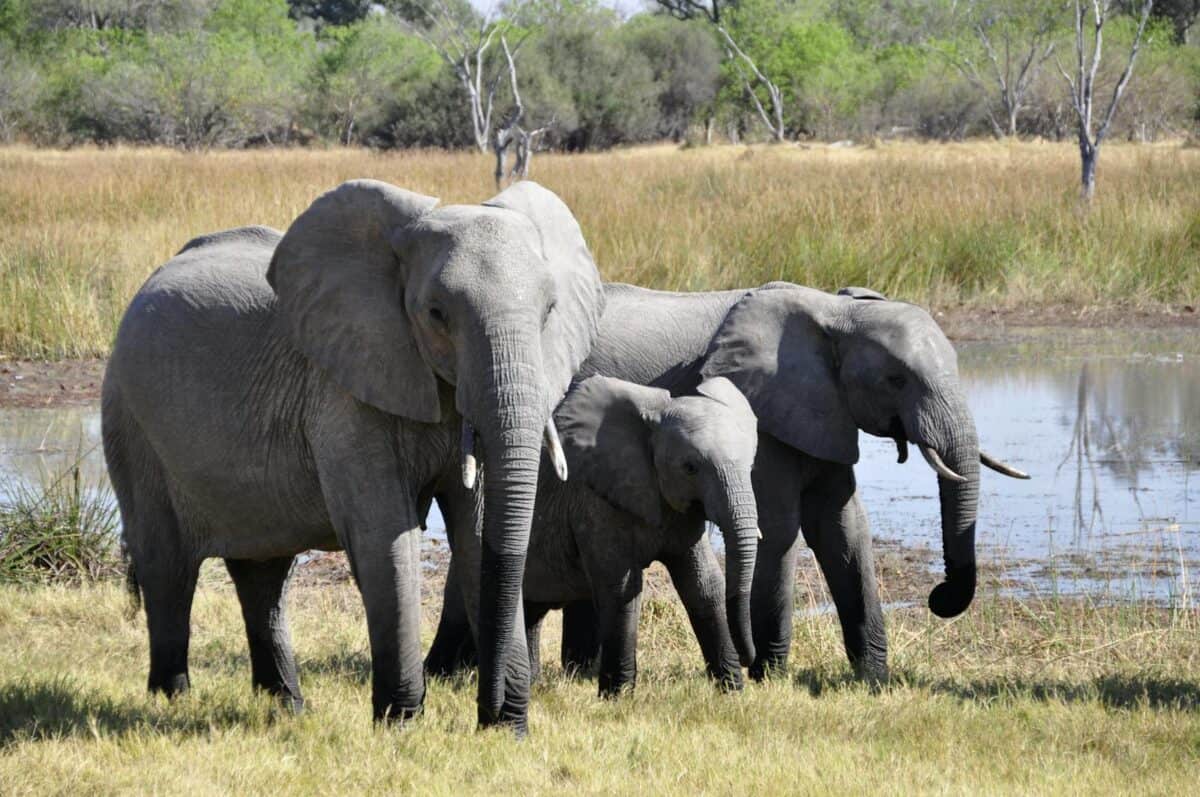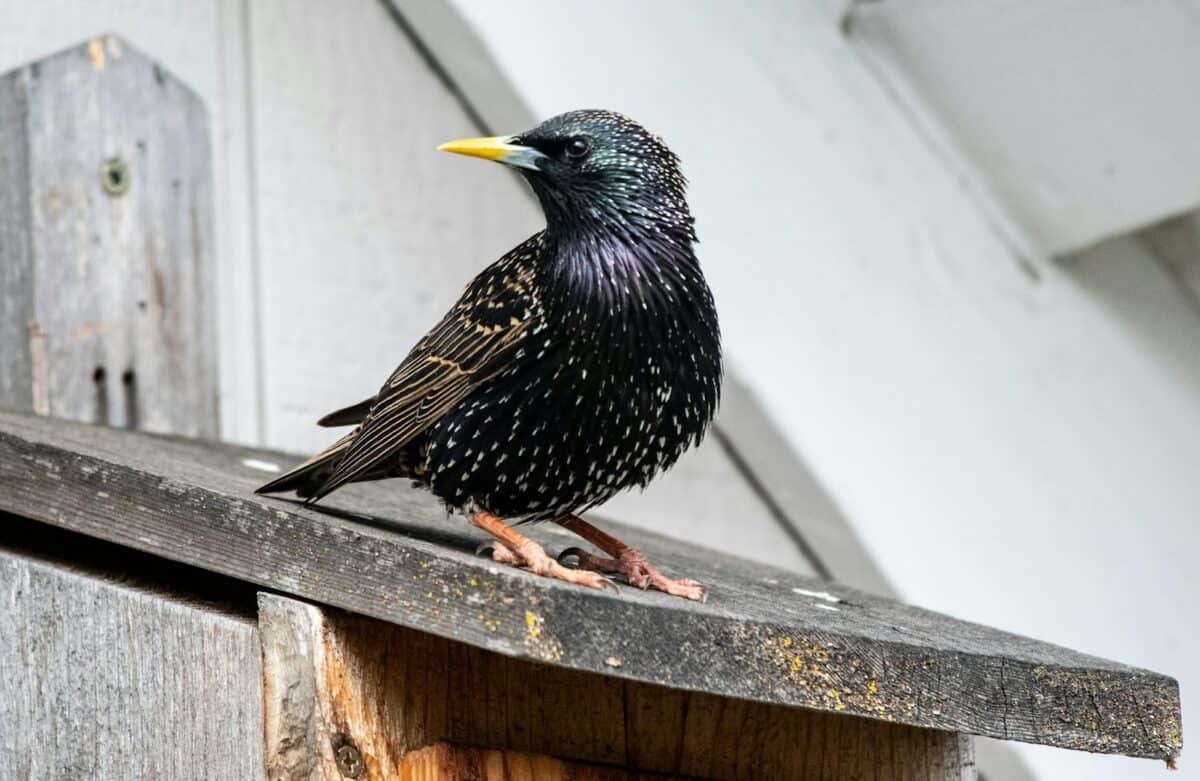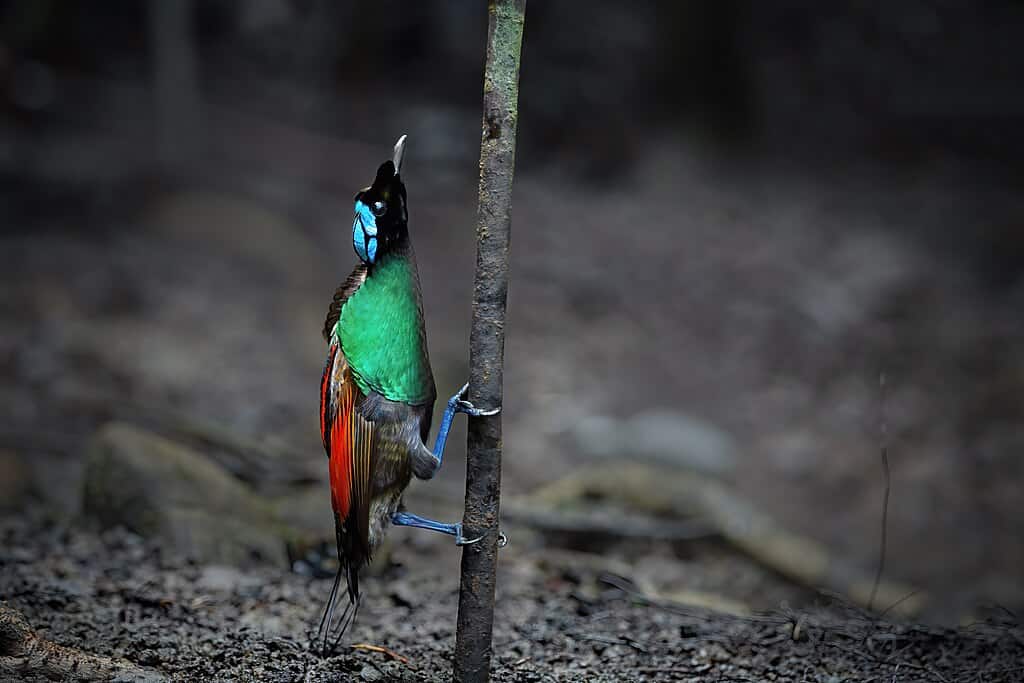The animal kingdom is filled with remarkable communication strategies that go far beyond vocalizations. While many of us are familiar with the chirps of birds or the roars of lions, a vast array of silent communication methods exists across species. From subtle body movements to chemical signals, animals have evolved sophisticated non-acoustic ways to share information, establish territories, find mates, and coordinate group activities. These silent messages are often more efficient, less energy-consuming, and safer (avoiding predator detection) than vocal communication. Let’s explore fourteen fascinating ways animals communicate without making a sound, offering a glimpse into the complex and ingenious world of animal communication.
14. Chemical Communication Through Pheromones

Perhaps one of the most widespread forms of silent communication in the animal kingdom, pheromones are chemical substances released by animals that trigger specific behaviors or physiological responses in members of the same species. Ants lay down pheromone trails to guide nestmates to food sources, creating invisible chemical highways that can be followed with remarkable precision. In mammals, pheromones often play crucial roles in reproductive communication. For instance, female elephants release specific pheromones in their urine when they’re ready to mate, which male elephants can detect from several kilometers away using their highly specialized vomeronasal organ. Even humans, though less reliant on chemical communication than other animals, may be subtly influenced by pheromones in ways scientists are still discovering.
13. Visual Displays and Body Posturing

Animals frequently use their bodies as communication tools through specific postures and movements. A peacock’s magnificent tail display isn’t merely decorative—it’s a complex visual communication system designed to attract females and demonstrate genetic fitness. Dogs communicate extensively through body language; a wagging tail can indicate friendliness, while ears pulled back might signal fear or submission. Primates have particularly sophisticated body language systems—chimpanzees, for example, use at least 30 distinct gestures to communicate specific intentions, from requesting food to initiating play. Even subtle posture shifts can communicate volumes about an animal’s intentions, emotional state, or social status within their group.
12. Color Changes and Patterns

Some animals possess the remarkable ability to change their coloration rapidly as a form of communication. The chameleon is perhaps the most famous example, capable of changing colors not primarily for camouflage as commonly believed, but often to signal dominance, submission, or mating readiness to other chameleons. Male Caribbean reef squids can display different color patterns on opposite sides of their bodies, effectively sending different messages to different viewers simultaneously. Cuttlefish take this ability to extraordinary levels, using specialized cells called chromatophores to create rippling patterns across their skin in what researchers have called a “living display screen.” These dynamic color changes allow for nuanced communication without making a sound.
11. Bioluminescent Signaling

The ability to produce light through biochemical processes provides some species with a unique communication channel, especially in dark environments. Fireflies famously use distinctive flash patterns to attract mates, with each species having its characteristic light signature. In the ocean depths where sunlight cannot penetrate, many deep-sea creatures use bioluminescence for communication. The anglerfish dangles a glowing lure to attract prey, while certain squid species can create complex light displays along their bodies to communicate with potential mates. Some species of dinoflagellates (microscopic marine organisms) create “blue tears” in the ocean—glowing blue light shows triggered when disturbed—that may serve as a warning signal to predators. These living light shows represent one of nature’s most magical forms of silent communication.
10. Seismic Communication Through Vibrations

Many animals communicate by creating vibrations that travel through substrates like soil, plants, or even spider webs. Elephants produce low-frequency rumbles that travel through the ground for kilometers, allowing them to coordinate movement and warn of dangers beyond visual range. These seismic messages can be detected through specialized sensors in their feet and trunks. Many insects rely heavily on vibration communication—male treehoppers, for instance, vibrate plant stems to court females in specific rhythmic patterns. Perhaps most impressively, spiders use their webs as extensions of their sensory systems; the precise vibration patterns created when something touches the web allow the spider to distinguish between prey, potential mates, or threats. This form of communication is particularly valuable in environments where visual or auditory signals might be blocked.
9. Electrical Signaling in Aquatic Environments

Some fish have evolved the extraordinary ability to generate and detect electrical fields, creating a communication channel particularly effective in murky waters where vision is limited. Electric fish like the elephant nose fish and electric eel produce weak electrical discharges that serve both for electrolocation (sensing their environment) and communication. Each fish generates a unique electrical signature that conveys information about species, sex, size, and individual identity. During courtship, certain electric fish engage in “electrical duets,” where males and females adjust their discharge patterns in response to each other. This electrical communication system allows for private conversations undetectable to most predators and functions effectively in complete darkness or turbid waters where other communication methods would fail.
8. Tactile Communication Through Touch

Physical contact serves as a fundamental communication method across the animal kingdom. Social grooming among primates isn’t just about hygiene—it reinforces social bonds and establishes hierarchies within groups. Elephants frequently touch each other with their trunks as gestures of greeting, reassurance, or affection. In feline species, head-butting (known as “bunting”) transfers scent and expresses affiliation. Bees communicate detailed information about food sources through their famous “waggle dance,” a tactile-visual hybrid communication system performed inside the darkness of the hive where other bees can feel the movements. Touch communication is particularly important for nocturnal animals and those living in environments where visual signals might be difficult to perceive, providing direct and immediate information exchange.
7. Visual Signaling Through Movement Patterns

Beyond static body postures, many animals communicate through specific movement patterns and displays. The honeybee waggle dance mentioned earlier provides remarkably precise information about distance and direction to food sources through the pattern of movement. Birds of paradise perform elaborate, choreographed dances during courtship, with each species having distinct movements that demonstrate fitness and attract mates. Fireflies synchronize their flashing patterns in some parts of the world, creating spectacular visual displays that help them find potential partners. Even fish participate in complex movement-based communication—the cleaner wrasse performs a distinctive dance-like swimming pattern that signals its cleaning services to larger fish. These movement patterns often convey information that would be difficult to communicate through other channels.
6. Territorial Marking

Many animals communicate ownership and boundaries through physical markers left in their environment. This ancient communication method often combines chemical signals with visual cues. Wolves and many other canids mark their territories by urinating at boundary points, leaving both visible and scent markers that communicate territorial claims to potential intruders. Tigers scratch trees and spray urine to mark their extensive territories, with these markers conveying information about the individual’s identity, reproductive status, and when they last passed through the area. Rabbits use specialized scent glands under their chins to mark objects within their territories. These territorial communications serve as persistent messages that continue to transmit information even when the animal is elsewhere, functioning as a kind of biological “no trespassing” sign.
5. Facial Expressions and Micro-Expressions

While often associated with humans, many animals use facial expressions as a sophisticated form of silent communication. Primates are particularly adept at this—chimpanzees have at least 13 distinct facial expressions that communicate various emotional states and intentions. Dogs have evolved facial expressions specifically to communicate with humans, raising their inner eyebrows to create the classic “puppy dog eyes” that trigger nurturing responses in people. Even rats display facial expressions in response to emotional states, including narrowing their eyes when in pain. These expressions often occur as rapid micro-expressions lasting fractions of a second but containing vital social information. The ability to read and respond to these subtle facial cues plays a crucial role in maintaining complex social structures in many species.
4. Gestural Communication and Sign Language

Some animals, particularly our closest primate relatives, use sophisticated gestural communication systems that resemble human sign language. Gorillas, chimpanzees, and bonobos naturally use dozens of distinct hand gestures in the wild, each with specific meanings. When taught by humans, great apes have demonstrated remarkable abilities to master modified sign language, with some individuals like Koko the gorilla reportedly learning over 1,000 signs and understanding thousands of spoken English words. Dolphins communicate with body postures and fin movements that function as a kind of gestural language underwater. These gesture-based communications often show intentionality—apes will repeat or modify gestures if their initial communication isn’t understood, demonstrating an awareness of their communication partner’s comprehension.
3. Referential Communication

Some animals can communicate about specific objects or events in their environment, a sophisticated ability known as referential communication. Honey bees’ waggle dance refers specifically to food locations, while prairie dogs have alarm calls that contain specific information about approaching predators, including their size, shape, and speed. Even more impressively, studies have shown that ravens point with their beaks to direct others’ attention to specific objects, similar to how humans point with fingers. Chimpanzees use gestures to request particular tools or food items, demonstrating their ability to refer to specific objects. This form of silent communication shows that many animals can mentally represent external objects and convey that information to others—a cognitive skill once thought unique to humans.
2. Synchronized Group Movements

The coordinated movements of animal groups—fish schools, bird flocks, insect swarms—represent an emergent form of silent communication where individual behaviors create collective patterns. Starling murmurations, where thousands of birds move as a single fluid entity, rely on each bird monitoring the movements of just seven neighbors, creating rippling information transfer through the entire flock without any centralized control. Similarly, fish in schools maintain precise spacing and directional alignment by responding to subtle pressure changes detected through specialized organs called lateral lines. These synchronized movements allow for rapid information spread about predators or resources. In some cases, like honeybee swarms searching for new nest sites, the group achieves collective decision-making through these movement patterns, demonstrating how simple individual communication rules can create sophisticated group intelligence.
1. Intentional Teaching

Perhaps the most cognitive complex form of silent communication, some animals intentionally demonstrate behaviors to teach others. Meerkats gradually teach their young to handle dangerous prey like scorpions—first bringing dead scorpions, then disabled ones, and finally live ones as the pups develop skills. Chimpanzee mothers have been observed adjusting their nut-cracking demonstrations based on their offspring’s skill level, effectively providing customized teaching. Tandem-running ants lead newcomers to food sources, adjusting their pace based on the follower’s feedback. This intentional knowledge transfer represents a sophisticated form of communication where information flows primarily through demonstration and observation rather than vocalization. The teaching animal must understand what the learner knows and needs to learn—a level of cognitive empathy once thought unique to humans.
Conclusion: The Silent Symphony of Animal Communication

The diversity of non-acoustic communication methods in the animal kingdom reveals nature’s ingenious solutions to the fundamental need to share information. From chemical signals that persist for days to split-second electrical discharges, animals have evolved communication strategies perfectly adapted to their environments, physiological capabilities, and social needs. These silent communication channels often operate in concert, with animals frequently using multiple methods simultaneously to ensure their messages are received clearly. As scientific research advances, we continue to discover ever more subtle and sophisticated forms of silent communication, challenging our understanding of animal cognition and social complexity. In appreciating these remarkable communication systems, we gain not only scientific knowledge but also a deeper connection to the intricate web of life on our planet and a greater appreciation for the diverse ways intelligence and social interaction can manifest.
- 10 Animals That Risked Their Lives to Save Humans - August 9, 2025
- 14 Reasons Why Bears Are Afraid of Humans (Most of the Time) - August 9, 2025
- 11 Frogs That Look Too Weird to Be Real - August 9, 2025

